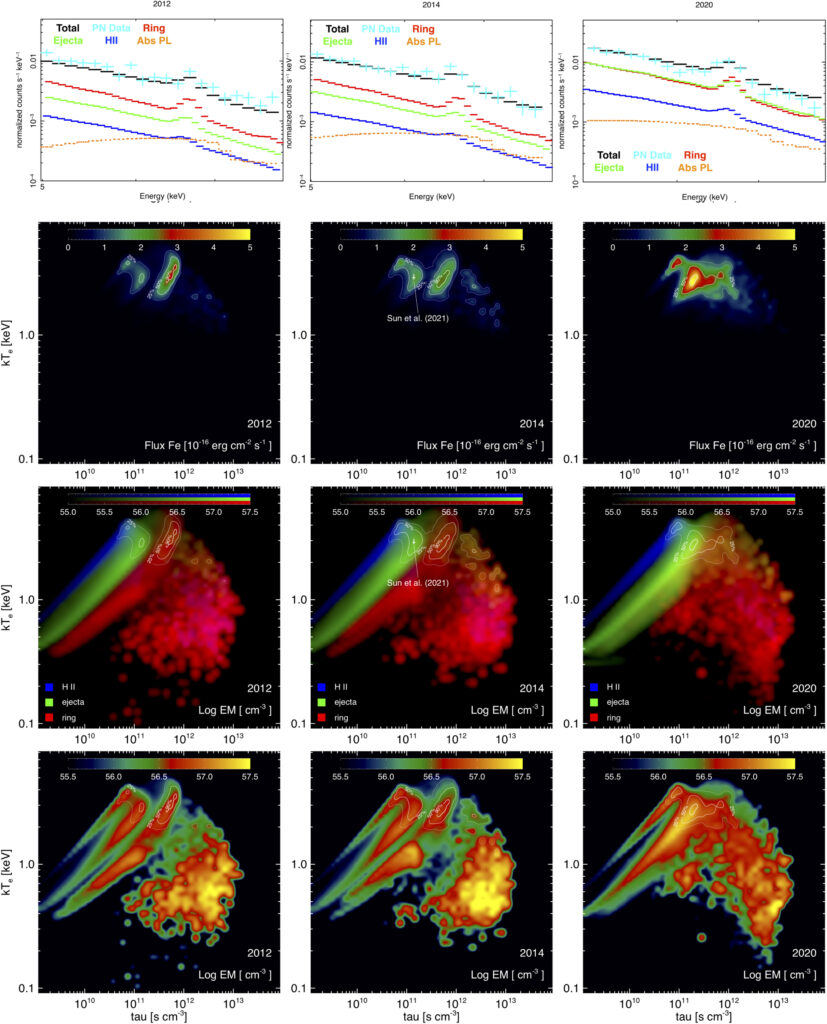Since the day of its explosion, supernova (SN) 1987A has been closely monitored to study its evolution and to detect its central compact relic. In fact, the formation of a neutron star is strongly supported by the detection of neutrinos from the SN. However, besides the detection in the Atacama Large Millimeter/submillimeter Array (ALMA) data of a feature that is compatible with the emission arising from a protopulsar wind nebula (PWN), the only hint of the existence of such an elusive compact object is provided by the detection of hard emission in NuSTAR data up to ∼20 keV. We report on the simultaneous analysis of multiepoch observations of SN 1987A performed with Chandra, XMM-Newton, and NuSTAR. We also compare the observations with a state-of-the-art three-dimensional magnetohydrodynamic simulation of SN 1987A. A heavily absorbed power law, consistent with the emission from a PWN embedded in the heart of SN 1987A, is needed to properly describe the high-energy part of the observed spectra. The spectral parameters of the best-fit power law are in agreement with the previous estimate, and exclude diffusive shock acceleration as a possible mechanism responsible for the observed nonthermal emission. The information extracted from our analysis is used to infer the physical characteristics of the pulsar and the broadband emission from its nebula, in agreement with the ALMA data. Analysis of the synthetic spectra also shows that, in the near future, the main contribution to the Fe K emission line will originate in the outermost shocked ejecta of SN 1987A.

Full Article:
Greco, E. (SHARP), Miceli, M., Orlando, S., Olmi, B., Bocchino, F., Nagataki, S., Sun, L., Vink, J. (SHARP), et al. (2022). Additional Evidence for a Pulsar Wind Nebula in the Heart of SN 1987A from Multiepoch X-Ray Data and MHD Modeling. The Astrophysical Journal, 931, doi: 10.3847/1538-4357/ac679d
License: CC BY 4.0





